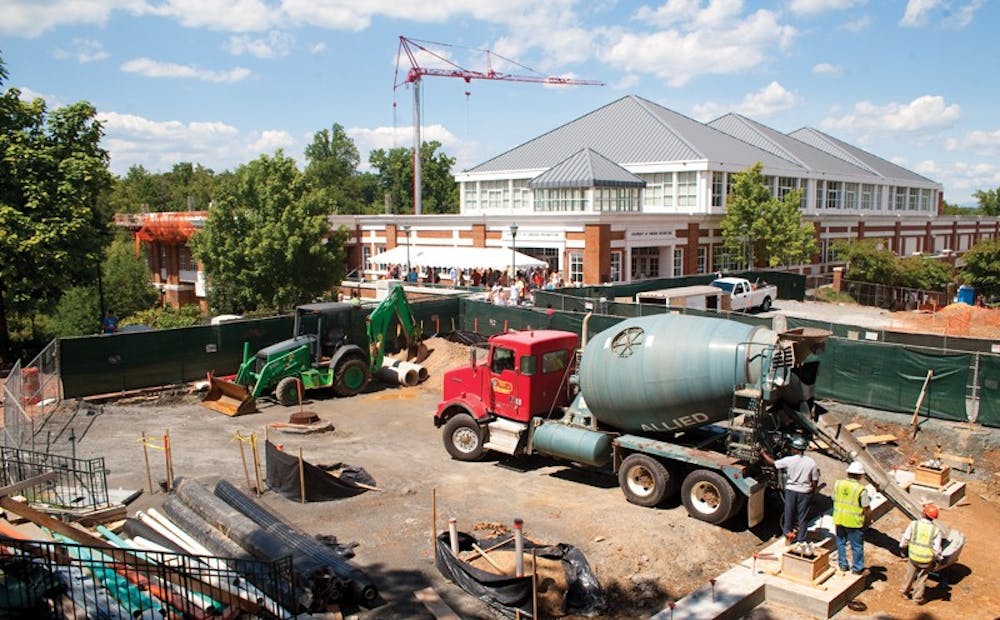Despite extensive renovation projects and the discovery of asbestos in its insulation, Newcomb Hall will remain open to students throughout the academic year.
The project, which will cost $33 million, began in May 2010 and is scheduled for completion in fall 2012, according to a statement released by the University last week.
As of now, several spaces on the bottom and first floor of the building, including the Student Activities Center, have been fully renovated as part of the completed phase one of the project, said William Ashby, assistant vice president of Student Affairs and associate dean of students.
The dining room renovations are occurring in two parts. Work began this summer, but the project will be on hold during the school year and completed in summer 2012.
"It would be easier to start and finish the project and open the dining hall for business, but we can't afford to go a full year with Newcomb closed and lose all those seats," Ashby said. "We wouldn't have enough space to feed everyone."
Among the notable changes are two separate dining areas, each with different entrees. Additionally, Newcomb has limited its to-go options to a single "enhanced menu," located in the former game room across the hall.
Other work on the building includes the theater on the bottom floor and the common spaces such as the ballroom and Kaleidoscope Room. Pat Punch, project manager at R.E. Lee & Son, the company contracted to do the building's construction, said these areas will most likely be available to the University for use in September.
The ballroom and other third floor spaces were originally scheduled to be completed last May, Ashby said.
The delay occurred because of various changes made by the University which extended the time required to do the work, Punch said.
"Changes included things such as piping changes, mechanical changes and duct work," Punch said. "Asbestos abatement work had to be done as well. Insulation in the building was discovered to have asbestos in it."
Punch said this discovery was not unexpected for a building constructed in the 1950s.
Dade Van Der Werf, University supervisory senior project manager, also commented on the asbestos problem.
"The building has been through numerous renovations," he said. "Throughout those renovations, the asbestos that has been encountered has been removed. There are areas where we have encountered insulation on duct work that hasn't been subject to prior abatements and prior renovations. When we encounter [asbestos] where it's not expected, we have to safely remove and dispose of the materials before we can continue."
Van Der Werf also noted that his team discovered water infiltration problems while beginning floor installation in the ballroom.
These unexpected conditions have translated into additional costs, he said. "If we addressed everything we encountered, we might incur up to 20 percent more costs than we'd anticipated," he said.
The age of the building is the primary reason for the delays in the project, Punch said, adding that he believes there will be several more delays before the building is complete.
"You have to change things, and that's just part of the nature of renovation projects," Punch said. "This building has been typical in that regard. The primary culprit is the fact it's an old building. There will be unforeseen conditions you have to work around"







